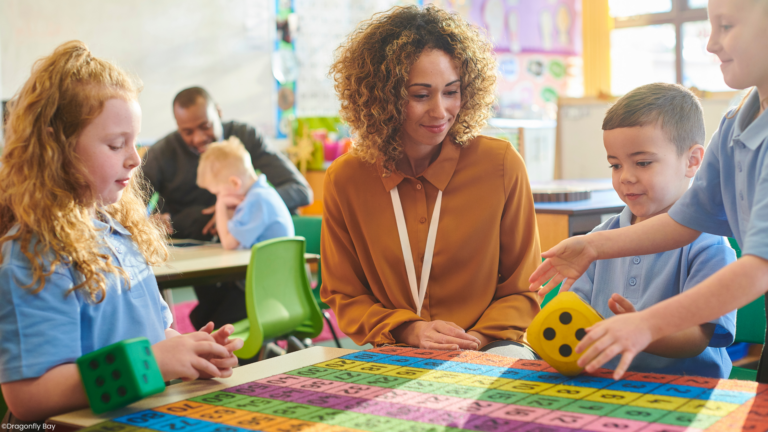
Introduction to Color by Code
Color by Code activities have become a popular educational tool, blending creativity with skill development. These engaging exercises require participants to color sections of a picture based on specific codes, often represented by numbers or letters corresponding to certain colors. This method not only captivates learners but also reinforces essential skills in a fun and interactive way.
Educators have recognized the value of color by code activities in fostering a range of developmental skills, making it a versatile addition to any curriculum. This article will explore the various dimensions of Color by Code, from enhancing fine motor skills to boosting cognitive abilities and fostering creativity.
Enhancing Fine Motor Skills
Why Fine Motor Skills Matter
Fine motor skills are essential for everyday tasks, from writing to manipulating small objects. For young learners, developing these skills can significantly impact their academic performance and overall confidence. The act of coloring requires precision and control, making it an excellent avenue for honing these abilities.
Color by Code activities provide a structured way for children to practice their grip, coordination, and dexterity. As they navigate through the codes and apply colors, they enhance their muscle memory and hand-eye coordination, skills crucial for later academic tasks like reading and writing.
Color by Code Activities for Fine Motor Development
Several creative Color by Code activities can effectively enhance fine motor skills. For instance, educators can design grid-based coloring sheets where each cell represents a different code. As students fill in these cells, they exercise their hand movements, providing a clear, structured way to practice fine motor skills.
Additionally, varying the tools used can also foster development. Using crayons, colored pencils, or even paint can introduce different levels of difficulty, allowing learners to adapt their techniques while engaging with the activity.
Boosting Cognitive Skills
Understanding Color Recognition
Color recognition is a fundamental cognitive skill that lays the groundwork for later learning in subjects like math and science. Color by Code activities typically require participants to identify and differentiate between various colors based on the coding system provided. This simple yet effective method reinforces color recognition through repetition and application.
As learners engage with these activities, they naturally improve their ability to recognize colors in their environment. This not only helps in academic contexts but also in daily life, such as understanding traffic lights or selecting clothing.
Pattern Recognition through Color by Code
Pattern recognition is another cognitive skill significantly developed through Color by Code exercises. Learners must recognize patterns not just in colors but also in the sequences of codes. This skill is vital for mathematical concepts like sequences and arrays, which students will encounter as they progress in their education.
By recognizing these patterns, students enhance their analytical skills, allowing them to approach more complex problems with confidence. Teachers can further extend this learning by introducing variations where students create their own patterns within the coding framework.
Encouraging Creativity and Expression
Creative Freedom within Structure
While Color by Code activities provide a structured environment, they also encourage creativity. Students can express themselves through their color choices and the personal flair they add to their work. By selecting colors that resonate with them, learners can inject their personality into the structured activity, fostering a sense of ownership over their creations.
This balance between structure and freedom is essential for creative development. It allows students to understand the importance of guidelines while also appreciating the beauty of individual expression. In this way, Color by Code becomes a canvas for young artists to explore their creativity.
Color Choices and Emotional Expression
Color can evoke emotions, and allowing students to make choices about their color palettes can lead to discussions about feelings and self-expression. Teachers can facilitate conversations about why certain colors resonate with students, linking emotional well-being to artistic expression.
For instance, a student may choose bright colors to represent happiness or darker shades to reflect a mood of introspection. Such discussions can help students develop emotional intelligence, making them more aware of their feelings and those of others.
Engaging Different Learning Styles
Visual Learners
Color by Code activities are particularly beneficial for visual learners, who thrive on visual aids and elements to grasp concepts. The vibrant colors and structured designs appeal to these learners, making the educational material more accessible. Through the process of coloring, visual learners can better retain information and concepts presented in their lessons.
Additionally, incorporating visual aids in the form of charts or images can enhance these activities further, providing clear examples of what is expected. This multimodal approach caters to visual learners effectively and ensures they remain engaged.
Kinesthetic Learners
Kinesthetic learners, who learn best through movement and hands-on activities, also find Color by Code engaging. The physical act of coloring requires movement and concentration, allowing these learners to connect with the material actively. By using larger coloring sheets or incorporating body movements, such as standing while coloring, educators can cater to kinesthetic needs while reinforcing learning.
Moreover, kinesthetic learners can be encouraged to create their own Color by Code activities, developing a deeper understanding of the coding process while also engaging in physical activity. This hands-on approach enhances retention and comprehension.
Implementing Color by Code in the Classroom
Tools and Resources for Educators
To effectively implement Color by Code activities in the classroom, educators need access to various tools and resources. Printable worksheets, coloring books, or interactive digital platforms can be valuable materials. Websites like Teachers Pay Teachers, including my own store, offer a plethora of ready-made resources that educators can easily integrate into their lesson plans.
Using technology can further enhance these activities. Many applications and websites provide digital Color by Code experiences, allowing students to color virtually. These platforms often include animations and sound effects that can delight and engage students, merging traditional learning with modern technology.
Creating a Color by Code Lesson Plan
When designing a lesson plan centered around Color by Code, educators should consider the grade level and developmental needs of their students. Start by setting clear objectives, such as improving fine motor skills or enhancing color recognition. Then, choose appropriate materials that align with these objectives, ensuring the activities are engaging and suited to students’ abilities.
For example, a lesson could begin with a brief introduction to colors, followed by a guided Color by Code activity, and conclude with a discussion on color choices and emotions. This structured approach not only reinforces learning but also encourages reflection and creativity.
Fun Variations to Try at Home
DIY Color by Code Projects
Parents and caregivers can also engage children with DIY Color by Code projects at home. One idea is to have children create their own Color by Code sheets. They can draw simple images and assign colors to specific numbers or letters. This not only fosters creativity but also gives children ownership of their learning process.
Another fun variation is to incorporate everyday items into Color by Code exercises. For instance, children can color code objects around the house based on their shape or color, turning the activity into a scavenger hunt that promotes both learning and exploration.
Incorporating Technology with Digital Tools
In today’s digital age, integrating technology enhances the Color by Code experience. Numerous apps are designed for coloring that allow children to color by numbers, often featuring engaging graphics and sound effects. By using these tools, children learn to navigate technology while honing their coloring skills.
Moreover, online platforms can facilitate connections among students. For instance, students can share their digital creations with peers, fostering a sense of community and collaboration even in a virtual environment.
Conclusion: The Joy of Learning through Color
Final Thoughts on Skill-Based Learning
Color by Code activities provide a unique and effective method for enhancing various skills in a fun and engaging manner. From fine motor development to cognitive skill building and creative expression, these activities have a multitude of benefits that cater to diverse learning styles.
As educators, parents, and caregivers, embracing Color by Code not only enriches the educational experience but also fosters a love of learning through creativity. The joy of bringing color to learning is an adventure worth exploring.
FAQs
What age group is suitable for Color by Code activities?
Color by Code activities are suitable for a wide range of ages, typically starting around preschool and extending through elementary school. Activities can be adapted for different levels of complexity to meet the developmental needs of learners.
Can Color by Code help with special educational needs?
Absolutely! Color by Code activities can be tailored to support students with special educational needs, providing a structured and engaging way to develop skills at their own pace.
What materials do I need for Color by Code projects?
Basic materials include coloring sheets or digital platforms, coloring tools like crayons or markers, and possibly a coding key for the color assignments. For DIY projects, additional craft materials may be used.
How can I make Color by Code activities more interactive?
Incorporate group activities, discussions about color choices, or technology by using apps or interactive boards. Engaging students in creating their own Color by Code projects can also enhance interactivity.
What are some additional resources for Color by Code activities?
Websites, like Teachers Pay Teachers, my store, educational blogs focused on early childhood education, and various children’s books about colors, can provide additional resources and ideas for implementation.


